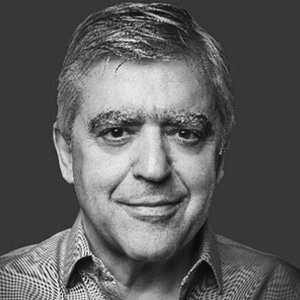“Imagine your congregation gathered to witness the first strokes of the Scribe’s quill on new parchment… Feeling a real connection to the shape of the letters, the texture of the parchment, the concentration of the Scribe, holding his quill, preparing to write the name of G-d.”
This is how my friend Rav Shmuel Miller, who passed away suddenly last week during Rosh Hashanah, described on his Web site his lifelong passion for enscribing Hebrew letters on holy scrolls.
He devoted much of his working life to the shape of these letters, the texture of parchment, the holding of a quill, with the concentration of a man always prepared to write the name of the Creator.
I first met Rav Miller when I moved to Pico-Robertson about seven years ago. I had just started writing my column, so I was making the rounds of the different shuls and rabbis of the neighborhood. I had heard from my French buddies about this unusual French-speaking rabbi (his friends affectionately called him “R’bbe Shmuel”), who had a little shul in his backyard.
As I got to know him better, I started to understand why he was so unusual.
For one thing, he looked like he came from another century. He had a glorious, regal look about him. He was tall and always stood up straight, ready to greet you properly. His eyes were dark and soulful, but with a mischievous sparkle. He wore his beard perfectly trimmed, framing a face ready at any moment to light up in laughter.
At home, he often dressed in jelabas and baboushes, much the way I remember my grandfather dressed in Casablanca.
As I wrote in 2007, Rav Miller would have looked right at home on the set of “Lawrence of Arabia.”
Although he was an expert in Hebrew letters, he had a lifelong fascination with Arabic and became an expert in that language as well.
His interest in Arabic, he once told me, started because he wanted to study the writings of Maimonides in his original text. This is what I wrote at the time:
“He says this [knowing Arabic] gave him a deeper, ‘more palpable’ understanding of Jewish ideas. For example, the word in Arabic that Maimonides uses for the Hebrew daat (knowledge) is eidrak, which refers to a knowledge that you ‘apprehend’ or ‘take in.’ It is a union between the modrak, the one who understands, and the modrik, the one who is understood.
“Whereas the Hebrew daat denotes something external and impersonal, the Arab eidrak defines a knowledge that is more personal and contemplative, one that ultimately becomes part of you.”
Ordained as an Orthodox rabbi, Rav Miller was an intellectual who seemed to know a lot about everything. When he gave classes at my house about the philosopher Emanuel Levinas, he would weave in sources from the Talmud, the Midrash and the prophets, as well as the Zohar.
For years, he was my go-to person for anything Jewish. We would meet early mornings at a Coffee Bean and Tea Leaf on Wilshire Boulevard, and I would pepper him with questions on a subject I was writing about. Usually, before I would finish my question, his face would light up with a big “Ah!,” as if to suggest he had a few surprises in store for me.
He also loved music.
On Tuesday nights, a group of hipsters would gather in his home for a kind of spiritual Middle Eastern jam session.
“We would sit in a circle and chant Tehilim until gravity no longer had any effect on us,” is how my friend Maimon Chocron, who played the bendir (north African snare hand drum) during the sessions, described it.
He had a small but intense following. He didn’t get much press, nor did he seek it. His home and shul became a gathering place for the eclectic Jews of Pico-Robertson.
For all the bohemia that surrounded him, there was a precision to everything Rav Miller did. Although there were stretches in his life where he experienced hardships, both personally and financially, his dignity never suffered. His thoughts and movements were always refined and meticulous, just as when he held his quill to shape letters on holy scrolls.
These scrolls are now read in countless synagogues on Shabbat, every time a Torah is opened. The letters in those scrolls are his personal legacy to our community.
His life itself, you might say, was a like a holy scroll. It had the Old-World texture of parchment, the sharpness of brilliant ink, and the permanence of great ideas.
In his distinguished, regal way, he spent a lifetime preparing to meet God.






















 More news and opinions than at a Shabbat dinner, right in your inbox.
More news and opinions than at a Shabbat dinner, right in your inbox.